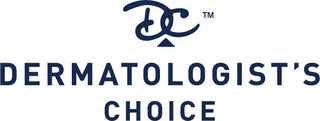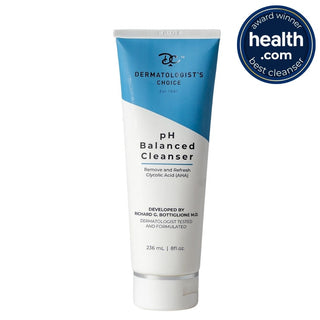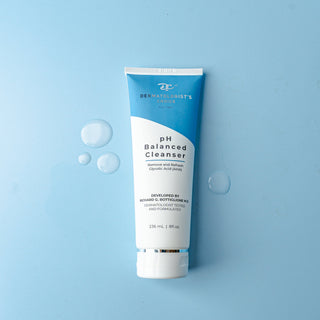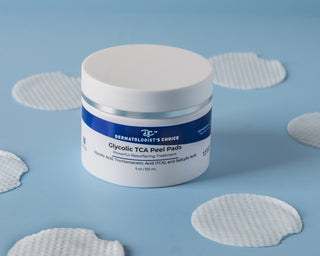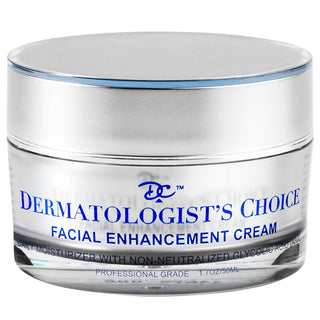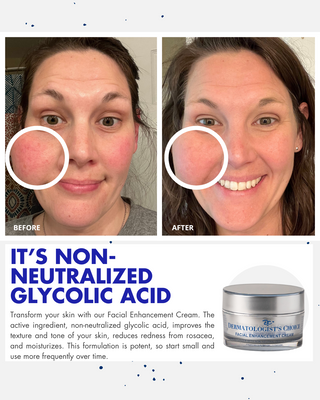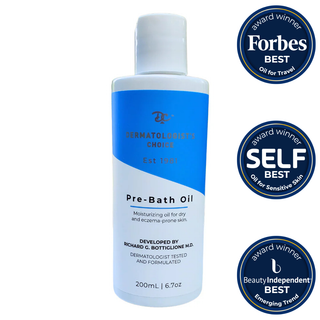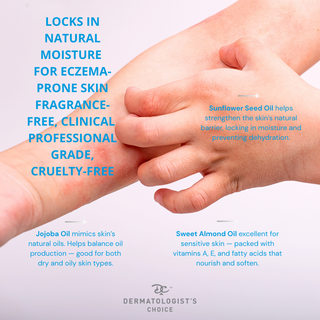Most already know of glycolic or salicylic chemical peels and products but TCA is the new acid you want to get better acquainted with because it is growing in popularity. Dermatologist have been using this next-level acid for decades and say it is better than the beloved glycolic.
Not sure what TCA is? Don't worry we have the ultimate guide to TCA for you, plus dermatologist formulated TCA Advanced Peel Solution available so you can get started with your at-home peel in no-time. Here is what you need to know to get started with a TCA peel.
TCA or Trichloroacetic acid is a medical-grade chemical peel treatment which helps reverse sun damage, wrinkles, and acne in the skin.

What is Trichloroacetic acid (TCA)?
TCA is a strong medical-grade peel. A time-tested ingredient for dermatologists, a TCA peel is a cosmetic treatment that uses trichloroacetic acid (TCA) to improve the skin’s appearance. TCA is naturally derived from acetic acid (like vinegar). TCA is the next-level above glycolic acid and FDA approved Retin-A.
A TCA peel works by breaking bonds of the top layer of skin for natural exfoliation and the removal of dead skin cells over a few days. It also stimulates new skin cell and collagen growth for smoother, more attractive new layers of skin. TCA is used to achieve younger looking skin and to improve the appearance of certain skin conditions like melasma and acne scarring. TCA is mostly suitable for all skin types.
TCA peels are a medium-depth peel that penetrates deeper than glycolic, salicylic, and most of the other acids available over the counter without going to a dermatologist. TCA is a medical-grade acid and until Dermatologist’s Choice TCA Advanced Peel, TCA has mainly been applied in a dermatologist office or medical spa. TCA is an ideal choice for those with fine lines, scarring, acne, wrinkles, and pigmentation concerns. A TCA peel can help be the quick and simple solution for minimizing fine lines, sun damage, and acne scars to name a few. TCA is highly effective and can produce exceptional results, similar to visiting the dermatologist. These are influencers and models favorite chemical peel.
How does TCA actually work in terms of penetration and exfoliation of the skin?
TCA works by breaking bonds of the top layer of skin for natural exfoliation and removal of dead skin cells over a few days. It also stimulates new skin cell and collagen growth, resulting in smoother, more attractive new layers of skin.
What determines the depth of the TCA peel - the percentage of TCA or the layers/volume of solution used?
The percentage of TCA does not determine the depth of the peel; instead, it is the layers of solution or volume of solution that cause the penetration and determine the depth of the TCA peel. The pH of the peel solution should be low, like the TCA Advanced Peel Solution, for the best penetration and depth into the skin.
How can TCA be adjusted to different depths to address common skin imperfections?
TCA can be easily adjusted to any depth needed by increasing the number of coats or the volume of solution used, allowing for customization to address specific skin imperfections.
How long has TCA been used and what is its history?
TCA is one of the most famous and long-tested acid peels available, with a history of over 135 years of use for achieving excellent results.
- Minimize fine lines
- Reverse sun damage
- Treat acne scars
- Effective against melasma
- Reduces pigmentation
- Minimizes age spots
- Suitable for most skin types
In addition to the above, TCA peels offer a range of benefits including addressing uneven skin tone, discoloration caused by acne, sun damage, and age spots. These peels help smooth texture issues, improve and firm sagging skin, promote collagen and elastin production, and deeply penetrate the skin to target wrinkles and scars. TCA peels can be an effective solution for individuals seeking to rejuvenate their skin and address various skin concerns.
Why are TCA peels considered effective for treating fine lines and wrinkles, hyperpigmentation, and acne scars?
TCA peels are effective for treating fine lines, wrinkles, hyperpigmentation, and acne scars due to their ability to penetrate deeper into the skin and stimulate collagen production, resulting in improved skin texture and appearance.
Derm Tip: This highly effetive TCA peel is not only for the skin on your face. It can be a solution for the body too. For hyperpigmentation on the legs resulting from sun damage, we recommend incorporating the TCA Advanced Peel Solution into your daily skincare routine. Additionally, the Hydrating Complex moisturizer can be used twice daily to the skin area where the TCA Peel has been applied to minimize dryness or irritation concerns. To address hyperpigmentation more intensively, consider incorporating the Glycolic Peel Cleansing Pads peel into your regimen before applying the TCA Peel for a deeper treatment. For individuals with darker and lighter skin tones, the TCA Peel is a suitable option to help improve the appearance of sun-induced hyperpigmentation on their legs.
Can a peel help improve the appearance of deep indented stretch marks?
Certainly! A peel, such as TCA Advanced Peel Solution, can be recommended for improving the appearance of deep indented stretch marks once a week. Additionally, using a product like the Ultra Anti-Aging Cream with active non-neutralized glycolic acid on a daily basis can also be highly beneficial in encouraging the development of new tissues to help reduce the appearance of these marks. After applying the TCA Peel or Ultra Anti-Aging Cream it is best to apply a moisturizer like the Hydrating Complex to keep the skin moisturized.
How do TCA peels address dull and uneven skin texture in addition to other skin concerns?
TCA peels are effective for treating a range of skin concerns, including dull and uneven skin texture, by penetrating deeper into the skin and promoting skin renewal.
What is the typical recovery period associated with TCA peels?
TCA peels typically require a longer recovery period compared to other chemical peels due to their deeper penetration into the skin. After a TCA peel is applied most start to experience dry, flaky, and peeling skin after 3 days and usually skin concludes this process by day 7. Skin is refreshed and renewed.
How do TCA peels compare to other chemical peels in terms of strength and penetration into the skin?
TCA peels are generally stronger and penetrate deeper into the skin compared to other chemical peels like glycolic or salicylic acid.
Who is this peel for?
TCA is suitable for most people at a concentration of 15% or less. Concentrations 15% or more are best applied at a dermatologist. Our dermatologist recommends the TCA Advanced Peel Solution for those who enjoy and have experience with non-neutralized glycolic acid. Those who have deep skin concerns can benefits from a TCA peel, compared to a lactic, salicylic, or even glycolic acid peel. Pregnant women should ask their doctors before using TCA. People with clinically irritated or dry skin should apply TCA with caution as TCA can cause dry skin after application and during skin purging. TCA is ideal for those with deep fine lines and cystic acne. Multiple sessions or applications may be required to get desired results. The Dermatologist's Choice TCA Advanced Peel Solution may be applied to the face, back, arms, shoulders, and legs. For areas where the skin is naturally thinner, (neck, eyes, hands, feet, chest) apply a thin layer of solution.
What is the Fitzpatrick Scale and how does it relate to skin tones and peels?
The Fitzpatrick Scale is a categorization system used to classify different skin tones based on their response to UV exposure. Ranging from Type I (pale skin that always burns and never tans) to Type VI (dark skin that never burns and always tans), each category has distinct characteristics that determine how the skin reacts to sunlight. In relation to chemical peels, the Fitzpatrick Scale plays a crucial role in helping individuals understand which type of peel is most suitable for their skin type. For example, individuals with lighter skin tones (Type I and II) are more susceptible to sunburn and may benefit from milder peels at first like Glycolic acid. On the other hand, those with darker skin tones (Type V and VI) are less likely to burn and tan more easily but an increase in hyperpigmentation is possible if the peel is too strong or applies wrong. Dermatologist recommend starting off with a mild peel like active non-neutralized glycolic acid is best for those newer to chemical peels and acids then working up to a strong chemical peel like TCA acid. By correlating specific types of chemical peels with different skin tones on the Fitzpatrick Scale, individuals can make more informed decisions about which peels are suitable for their skin type, thus ensuring safer and more effective results. It's important to keep in mind what your skin can tolerate and starting at a mild chemical peel like the Dermatologist's Choice Glycolic Peel Cleansing Pads can be the safest.

Is the Dermatologist’s Choice TCA Advanced Peel Solution safe?
Quick answer, yes.
Keep in mind that TCA should not be used on those who have severely sensitive skin or those who have never used non-neutralized glycolic acid.
Our Dermatologist recommends starting with a thin TCA application once a month. For those who have sensitive skin or never used non-neutralized glycolic before, our dermatologist recommends the use of Dermatologist’s Choice Facial Enhancement Cream or Ultra Anti-Aging Cream to build the skin’s tolerance to non-neutralized acids.
If the TCA or other acid is applied too heavily, skin may become red. Slight burning or stinging may occur. This is normal. Our dermatologist has never seen a burn scar from it. It penetrates deep into the skin and will actually help achieve better results by lifting irritation and congestion in the deeper layers of the skin. To soothe redness or stinging apply lotion or oil on skin immediately. Several days after applying a TCA peel skin may flake, peel, or become dry or red. In a week, once the downtime has concluded, skin is typically looking its best – brighter, clearer, and smoother.
What skin types are suitable for TCA 10% and TCA 20% peels?
TCA 10%-15% peels are generally safe and suitable for individuals with all skin tones and types, especially those with normal to oily skin, as well as those with sun-damaged, dull, and uneven skin. However, it is advised to avoid using TCA 20% peels on individuals with medium to dark skin tones due to the higher risk of hyperpigmentation.
How do I know if the TCA is the best chemical peel for me?
There are several strengths of TCA peels, keep in mind allowing various formulations to work at different depths in the skin. The TCA formulation that will work best for your needs will depend on factors such as what you’re seeking treatment for and the extent of improvement possible in the treatment area.
Dr. B. explains how to apply Dermatologist's Choice TCA peel.
Our Dermatologist’s Choice TCA Advanced Peel Solution is the best strength for at home use. This strength is commonly used in a derm office. The other stronger strengths should be used only in an office setting. Refer to our website for further information. The Dermatologist’s Choice TCA Advanced Solution is the only TCA on the market that is not neutralized or mixed with other buffers or acids. Our TCA Advanced Peel Solution is in the purest form.
How can one determine if additional layers of TCA solution are necessary during the peel process?
If frosting, which appears as a white haze on the skin, is apparent, then the application should stop. If some areas show frosting while others do not, additional layers can be applied to the areas that are not white. Decision on additional layers should be based on the skin's response and desired results.
How long should one wait between applying layers of TCA solution?
After applying each layer of TCA solution, one should wait approximately 3-5 minutes. This allows the proteins in the skin to coagulate and the acid to self-neutralize before deciding if additional layers are necessary.
How should the applicator be prepared to ensure proper application of the solution?
To prepare the applicator, shake the liquid solution, open the roller ball bottle and gently roll across the skin in an even layer. The TCA Advanced Peel Solution is the first of its type to be in a easy to use roll on applicator. Bonus, there is no mess and the acid doesn't get on your hands.
What is the process for applying multiple layers of TCA solution during a peel treatment?
Multiple layers of TCA solution should be applied without washing off any previous layers to progress the peel deeper into the skin. Each layer is applied directly on top of the previous one, allowing the acid to penetrate deeper with each application. You may feel a sting, that's normal and a sign it's working. Apply moisturizer after application.
How much solution should be used when applying a TCA peel at home?
A TCA peel gets its strength from being applied in multiple layers and the pH level. For first-time application, it is suggested to apply only 1 layer and then strengthen the peel with additional layers as needed. Apply as you and your skin feel comfortable.
How can you maintain the results of a TCA peel?
To maintain the results of a TCA peel, it is important to keep the skin well-hydrated by using a product like Medpeel Hydra-Plump 2.5% Hyaluronic Serum regularly. Additionally, wearing sun protection with a minimum SPF of 30 is crucial to protect the skin from harmful UV rays. Using a suitable daily exfoliator, such as the Medpeel Glycolic 10%, can help in gently removing any peeling or flaking skin post-TCA peel while keeping the pores clear and the skin smooth. These steps will aid in sustaining the long-term benefits of a TCA peel.
How soon after a chemical peel can one resume using Retin-A nightly?
After your chemical peel, it is advisable to wait until your skin has finished peeling before reintroducing Retin-A into your nightly skincare routine. Once your skin is no longer flaking and has fully recovered from the peel, you can begin using Retin-A again on a nightly basis. This will help to avoid any potential irritation or adverse reactions and ensure that your skin benefits effectively from the Retin-A treatment.
Is it advisable to workout or sweat after a peel? If so, when is it safe to do so?
Working out or sweat immediately after a deep chemical peel shouldn't interfere with your TCA peel results. However, limiting the amount of sweat can be helpful to allow the peel to renew the skin as intended until the skin finishes peeling. After a deep peel you may feel some tightness or discomfort when exercising. If this occurs reduce intensity of the workout, clean any sweat off the skin, and apply a oil free moisturizer like the Hydrating Complex. For lighter peels regular exercise or sweat usually has not impact on the skin or the peel process.
What are some of the common products and practices recommended for post-chemical peel care and maintenance?
After undergoing a TCA advanced peel solution, it is best to follow a specific skincare routine to promote healing and maintain the results. Common post-chemical peel care products and practices typically include gentle cleanser like the Dermatologist's Choice pH Balanced Cleanser, non-abrasive exfoliants like the Dermatologist's Choice Facial Enhancement Cream and a oil free moisturizer like the Hydrating Complex and SPF protection. Additionally, it is recommended to keep the skin hydrated, avoid direct sun exposure, refrain from picking at or peeling the skin. Regular peel treatments at home with the TCA Advanced Peel Solution helps to improve the skin texture and tone for healthy, glowing skin.
How long will a TCA Advanced Peel Solution be good for? How long will an unopened peel be good for?
Here's a thorough answer addressing the question about the shelf life of a TCA acid peel solution in a less than 2 oz bottle: Based on general guidelines for the storage of acid solutions, an unopened 2 oz bottle will typically remain stable and maintain its quality for about 2 years from the date of production. However, once the bottle is opened, the shelf life of the acid solution is usually shortened to approximately 1 year. Therefore, if you opened your 2 oz bottle in May 2024, the TCA acid solution is expected to remain effective for use until around May 2025. It is advisable to store the opened bottle properly according, typically in a well balanced climate with minimal sunlight, to ensure its potency and avoid any potential degradation over time.
How much does a TCA chemical peel treatment cost, and where can it be purchased?
Here’s the best way to begin, purchase the TCA Advanced Peel Solution, just $199 and apply to a test area of skin before applying to the full face. For best results, target wrinkled skin and acne breakout with more frequent applications to desired area. Apply an oil free Hydrating Complex and sunscreen immediately after and avoid direct sunlight. The TCA Advanced Peel Solution is a true antiaging peel that helps stimulate collagen, glycosaminoglycans, and elastin fibers when applied safely at home.

SHOP NOW: Dermatologist's Choice Skincare TCA Advanced Peel Solution, $199

